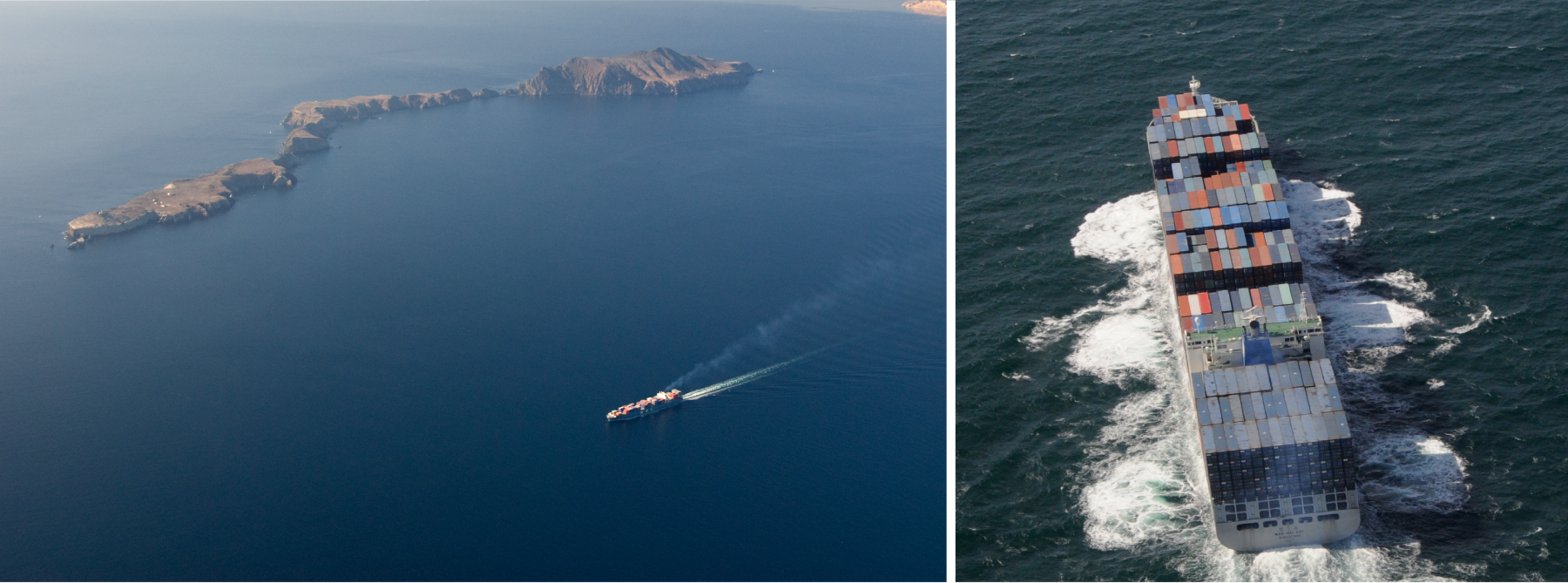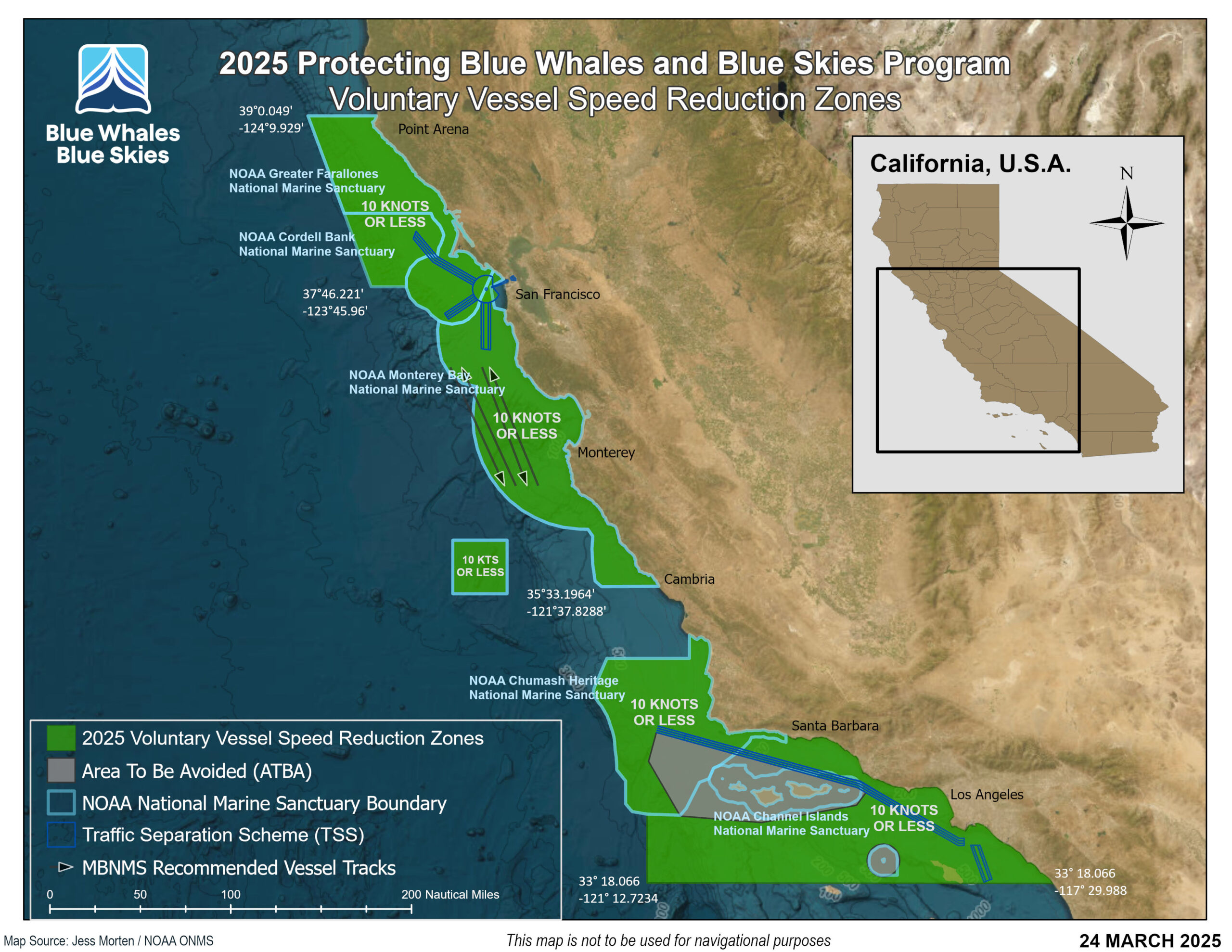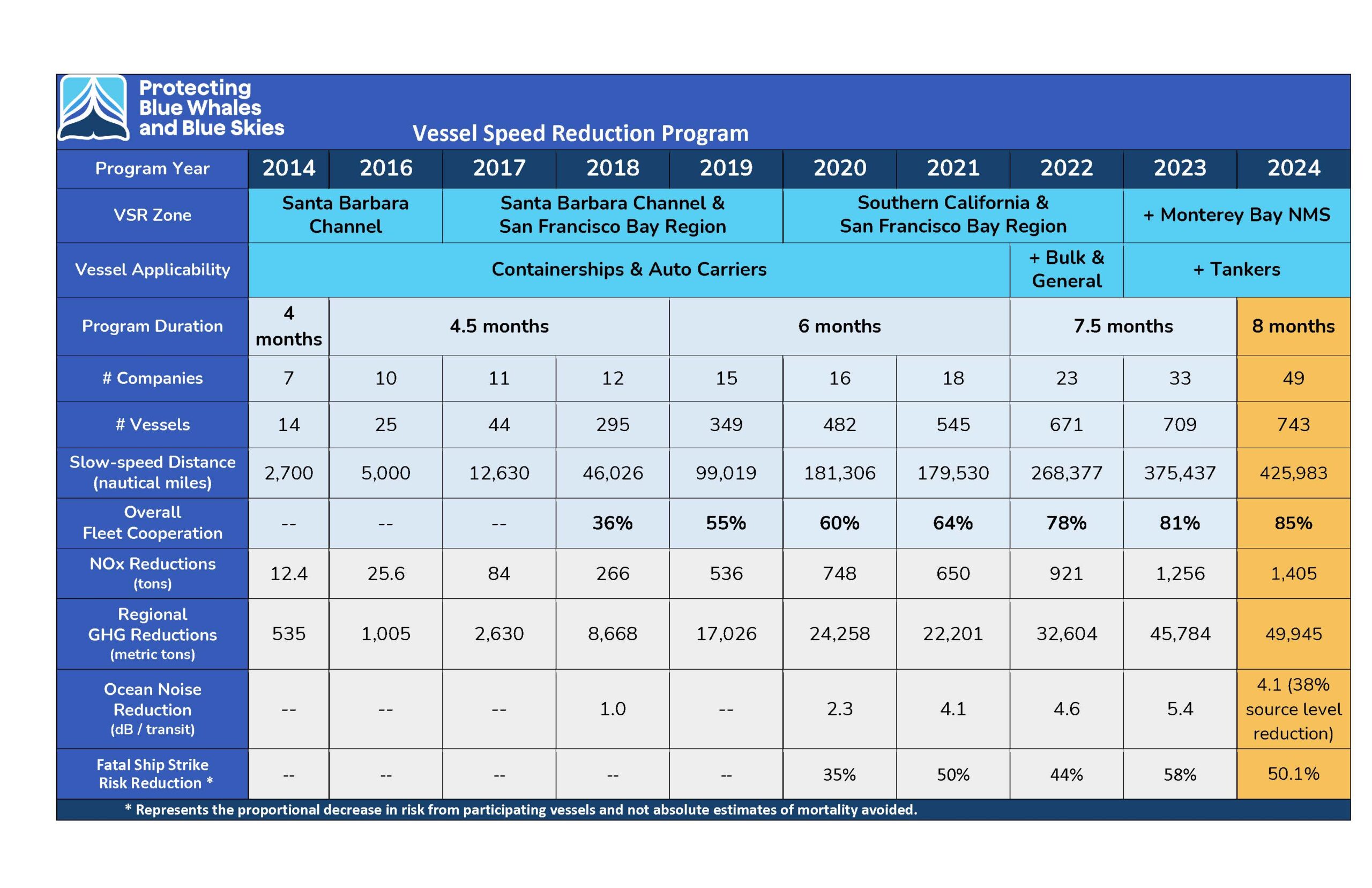
The new Blue Whales and Blue Skies website (www.BlueWhalesBlueSkies.org) has been launched with additional features and resources. Please visit the site for new content and future program updates.
Overview
Every year, ocean-going vessels make thousands of transits in the shipping lanes in the Santa Barbara Channel region and along the California coast. These vessels are a significant source of air pollution and ship strikes on endangered blue, humpback, and fin whales. The Vessel Speed Reduction program is a voluntary program where the District and its partners ask the vessel operators to slow down to a speed of 10 knots or less, which decreases engine load and fuel consumption, effectively reducing emissions of nitrogen oxides, diesel particulate matter, sulfur compounds, and greenhouse gases. Slowing down also reduces the risk of fatal ship strikes to endangered whales and the volume of underwater noise.
The program runs annually from May to December to coincide with the season when concentrations of ground-level ozone, or smog, are typically high and when whales are migrating and feeding in the area. All participating vessel operators are asked to voluntarily slow to 10 knots or less in the VSR zones, and Automatic Identification System (AIS) data is used to verify the speeds of each vessel. Public recognition is then given to the fleets that cooperate with the slow-speed requests.
The program has since spread to include more of the Southern California coast and a region covering San Francisco and Monterey bays. A map of the current VSR zones is shown below. For more information, please visit www.BlueWhalesBlueSkies.org.

Success of the VSR Program Throughout the Years
For a comparison on how the program has been growing throughout the years, please see the table below.

Additional Information
- June 2025: Board Update on Vessel Speed Reduction Program
- Whale Safe website that shows vessel transit and whale data.
- NOAA Channel Islands National Marine Sanctuary issues additional advisories when whales are present for ALL ships (300 gross registered tons or larger) to reduce speeds to 10 knots or less.
